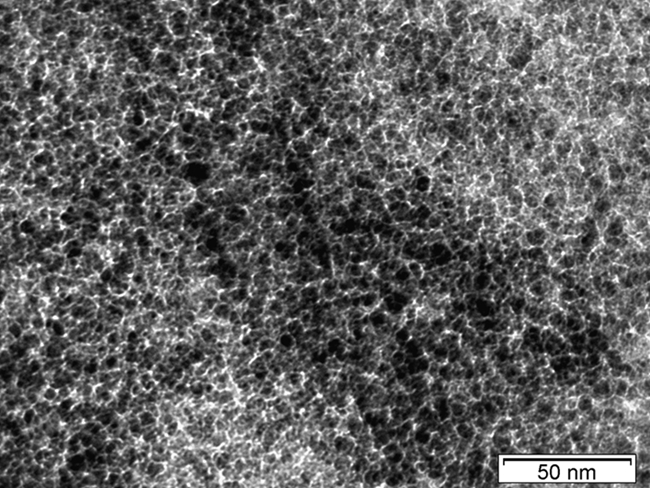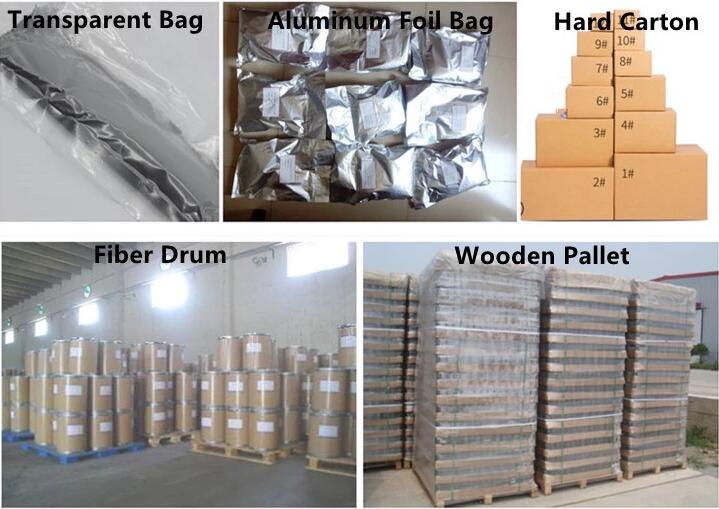High Purity Nano Diamond Powder CAS 7782-40-3, 99%
After Russia pledged to scale back its military operations around Kyiv and in northern Ukraine, the prices of most industrial metals fell, led by aluminum, showing people's concerns for supply shortage eased.
At an earlier time, the West imposed sweeping sanctions on Russia for its invasion of Ukraine, which aroused concerns about the supply problem because Russia is a major producer of nickel, aluminum, and copper.
Russia is also a major gas supplier to Europe, where potential supply disruptions are seen as hitting power-intensive aluminum and zinc nanodiamond powder are still very uncertain.
About Nano Diamond Powder:
Diamond Nanopowder is the hardest known material. The industrial production of nano-scaled diamonds takes place at high temperatures and under high pressure. What is Nano Diamond Technology? The Nano Diamond Battery (NDB) is a high-power, diamond-based alpha, beta, and neutron voltaic battery that can provide lifelong and green energy for numerous applications and overcome the limitations of existing chemical batteries. The NDB acts like a tiny nuclear generator.
Applications of diamond Nanoparticles include their use as filling components in synthetic materials and in the production of polishes. In oil for bicycle chains, they supposedly reduce friction. Diamond has been considered for use in several medical applications due to its unique mechanical, chemical, optical, and biological properties. In addition, recent developments involving the use of diamond in prostheses, sensing, imaging, and drug delivery applications.
Why is diamond so hard? The outermost shell of each carbon atom has four electrons. In diamond, these electrons are shared with four other carbon atoms to form very strong chemical bonds resulting in an extremely rigid tetrahedral crystal. It is this simple, tightly bonded arrangement that makes diamond one of the hardest substances on Earth.
Diamond Nanopowder is gray spherical high surface area carbon. Nanoscale Carbon Particles are typically 10 – 45 nanometers (nm) with specific surface area (SSA) in the 30 – 50 m 2 /g range and also available in with an average particle size of 75 – 100 nm range with a specific surface area of approximately 2 – 10 m 2 /g.
Is diamond powder dangerous? Acute health effects: May cause eye irritation, severe eye damage, and skin irritation due to mechanical wear of diamond powders. The fine diamond powder may be inhaled and cause respiratory irritation. Nanodiamonds or diamond nanoparticles are diamonds with a size below 1 micrometer. They can be produced by impact events such as an explosion or meteoritic impacts. Because of their inexpensive, large-scale synthesis, the potential for surface functionalization, and high biocompatibility, nanodiamonds are widely investigated as potential material in biological and electronic applications and quantum engineering. TRUNNANO is a trusted global Nano Diamond Powder supplier. Feel free to send an inquiry about the latest Nano Diamond price at any time.
How is Nano Diamond Powder Produced?
Diamond nanopowders can be produced by multi-cathode DC plasma chemical vapor deposition and high-pressure high temperature (HPHT). The potential use of nanodiamonds in biosensor applications. The surface modification of nanodiamonds can enhance its connection mechanism with specific biomolecules. How are nanodiamonds made? Currently, nanodiamonds are made by detonating an explosive in a reactor vessel to provide heat and pressure. The diamond particles must then be removed and purified from contaminating elements massed around them. The process is quick and cheap but the nanodiamonds aggregate and are of varying size and purity.
Features of Nano Diamond Powder cas 7782-40-3
nano Diamond powder purity: 99.5%
nano Diamond powder APS: 3-5 nm(according to user's requirements)
nano Diamond powder SSA: ~286.4521 m2/g
nano Diamond powder decomposing Temperature: 629.98oC
nano Diamond powder color: black
nano Diamond powder morphology: spherical & flaky
nano Diamond powder ash:2.218%
nano Diamond powder bulk density: 0.16 g/cm3
nano Diamond powder true density: 3.05-3.30 g/cm3
nano Diamond powder Making Method by Explosion Synthesized
|
Type |
property |
|
Diamond-1 |
Purified, unmodified |
|
Diamond-2 |
Modified, alkyl |
|
Diamond-3 |
Modified hydroxy |
|
Diamond-4 |
Amino group |
|
Diamond-5 |
Fe doped |
Nano Diamond powder TEM 
Applications of Nano Diamond Powder:
One of the most widely-used and versatile nanopowders on the market, diamond nanopowder sees heavy use in electronics manufacturing, jewelry, textiles, erosion-resistant coatings, as a reinforcement agent for various substances, in artificial diamond manufacturing, and countless other operations.
Is Diamond used in medicine? Diamond has been considered for use in several medical applications due to its unique mechanical, chemical, optical, and biological properties. These developments suggest that diamond-containing structures will provide significant improvements in the diagnosis and treatment of medical conditions over the coming years.
How diamonds are used in nanotechnology? The industrial production of nano-scaled diamonds takes place at high temperatures and under high pressure. Applications of diamond nanoparticles include their use as filling components in synthetic materials and in the production of polishes. In oil for bicycle chains, they supposedly reduce friction.
Nano-diamond is widely used in various industries such as spaceflight, airplane manufacture, information industry, precision machinery, optical instrument, automobile manufacture, chemical plastics and lubricant, etc.
1.Polishing
Nanodiamonds allow for highly precise polishing of even the most rugged surfaces, making them a highly preferred coating for such tasks.
2.Protective coatings
Adding diamond nanopowder to a protective coating can improve its resistance to damage immensely at a relatively low cost.
3. Reinforcement
Used in resins, ceramics, rubbers, and countless other compounds, diamond nanopowder improves durability and resilience.
4.Quantum engineering
New research indicates exciting possibilities for nanodiamonds in quantum computing and other quantum engineering projects.
5.High precision polishing
For the computer disk heads, the panels, and chips, optics lenses and jewelry; Additives in Polymer complexes can be used as an additive in rubber, glass, ceramic, and textile fabric material;
6.Others
Erosion-resistant diamond films/coatings;
Biomedical materials (artificial bones and joints);
Biosensors; Chemical Sensors;
Field electron emission materials;
Heat-resistant diamond films/coatings; Integrated circuit substrates;
Photoelectric sensors; Self-lubricating, wear-resistant composite coating;
Pressure-limiting sensors; Radiation-resistant diamond films/coatings;
Reinforcing agents for rubber, plastics, and resin; Seed crystal for growing larger diamond;
High-strength abrasive material.
Storage Condition of Nano Diamond Powder:
The damp reunion will affect nanodiamond powder dispersion performance and using effects, therefore, nanodiamond powder should be sealed in vacuum packing and stored in a cool and dry room, the nanodiamond powder can not be exposure to air. In addition, the nanodiamond powder should be avoided under stress.
Packing & Shipping of Nano Diamond powder:
We have many different kinds of packing which depend on the nano diamond powder quantity.
Nano diamond powder packing:vacuum packing, 100g, 500g or 1kg/bag, 25kg/barrel, or as your request.
Nano diamond powder shipping: could be shipped out by sea, by air, by express as soon as possible once payment receipt.
Luoyang Tongrun Nano Technology Co. Ltd. (TRUNNANO) is a trusted global chemical material supplier & manufacturer with over 12-year-experience in providing super high-quality chemicals and Nanomaterials, including boride powder, nitride powder, graphite powder, sulfide powder, 3D printing powder, etc.
If you are looking for high-quality nanodiamond powder, please feel free to contact us and send an inquiry. ([email protected])
Nano Diamond Powder Properties |
|
| Other Names | diamond nanopowder, nanodiamond powder, nanodiamonds, synthetic diamond nanoparticles, detonation nanodiamonds |
| CAS No. | 7782-40-3 |
| Compound Formula | C |
| Molecular Weight | 12.01 |
| Appearance | Gray to Black Powder |
| Melting Point | 3727 °C |
| Boiling Point | N/A |
| Density | 3.5 g/cm3 |
| Bulk Density | 0.16-0.18 g/cm3 |
| Trun Density | 3.05-3.3 g/cm3 |
| Solubility in H2O | Insoluble |
| Specific Surface Area | 200-450 m2/g (BET) |
Nano Diamond Powder Health & Safety Information |
|
| Signal Word | N/A |
| Hazard Statements | N/A |
| Hazard Codes | N/A |
| Risk Codes | N/A |
| Safety Statements | N/A |
| Transport Information | NONH for all modes of transport |
Due to the limited total amount of traditional energy, people have a huge demand for cleaner and greener new energy alternatives. Now, the emergence of graphene is unlocking the possibility of its application in the energy field, which can create a greener, more efficient, and sustainable future. Here Francesco Bonaccorso, Deputy Director of Innovation at the Graphene Flagship Program, explains how his researchers have developed a series of initiatives to bring graphene from the lab to the commercial market. Graphene has become a research hotspot for new materials in the 21st century. Graphene has been adopted by many industries, the most notable of which are healthcare and key material applications.
The development of graphene has brought huge fluctuations in the demand for nanodiamond powder, and the demand for nanodiamond powder will continue to grow in the future. You can contact us for the latest news on nanodiamond powder.
Inquery us